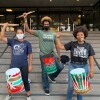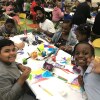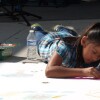Mobile Art Lab Brings Arts Programming to the Streets of L.A.

It all started with a lowrider.
Two decades ago, Luis Antonio Pichardo's dad bought the 1969 Chevy Impala Custom as part of a requirement — to be able to visit his kids after a divorce. Then, it became Pichardo's car and he drove it for a little more than 10 years. Until he decided it could be part of a larger project.
Pichardo is the founder and executive director of DSTL Arts, a non-profit arts organization established in 2012 that "inspires, teaches and hires emerging artists from underserved communities," as it states on its website. He decided to sell the Impala to help partially fund a new initiative: a mobile art lab. In 2017, the organization raised a total of $10,000 — from the sale of the car as well as private donations. With the addition of a grant from the Eastside Arts Initiative and $3,000 from his own savings, Pichardo bought a Jeep Renegade that he turned into a roving art lab that fall. It housed a large-format printer and scanner for creatives to print and reproduce their art, zines, writing and more.
Now, the Mobile Art Lab will expand with a new ride: an HC1 travel trailer. Although the idea dates back to before the pandemic, it only made all the more sense as things shut down.
After fundraising, Pichardo picked up the new vehicle from Happier Camper this May. The model was created to be towed with most standard cars; it fits in one parking spot and houses 42 square feet of walkable floor space.
The trailer is built to sleep up to five people, but Pichardo says that with COVID-19 safety measures, he envisions two people at a time using the space to create. He plans on making use of outdoor space, like parks, to allow even more people to interact with it. Pichardo will outfit the camper with a Wi-Fi hotspot; a large format scanner and printer; books, comics and zines from the DSTL Arts catalog; and iPads.
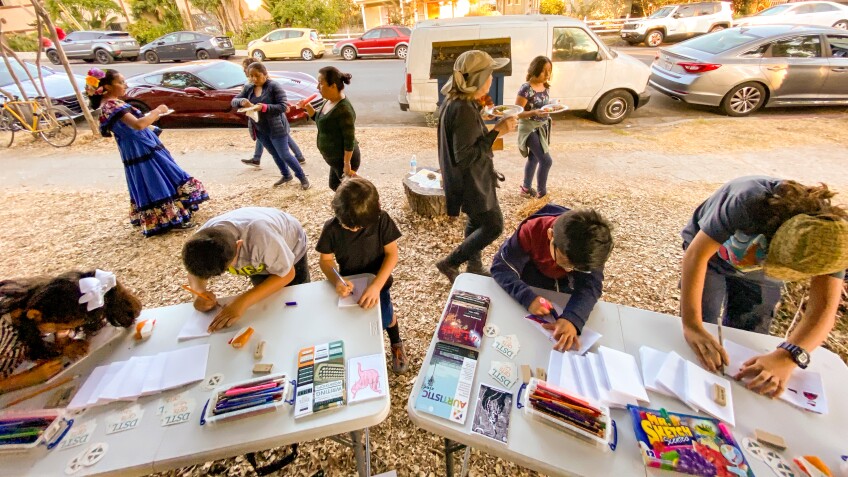


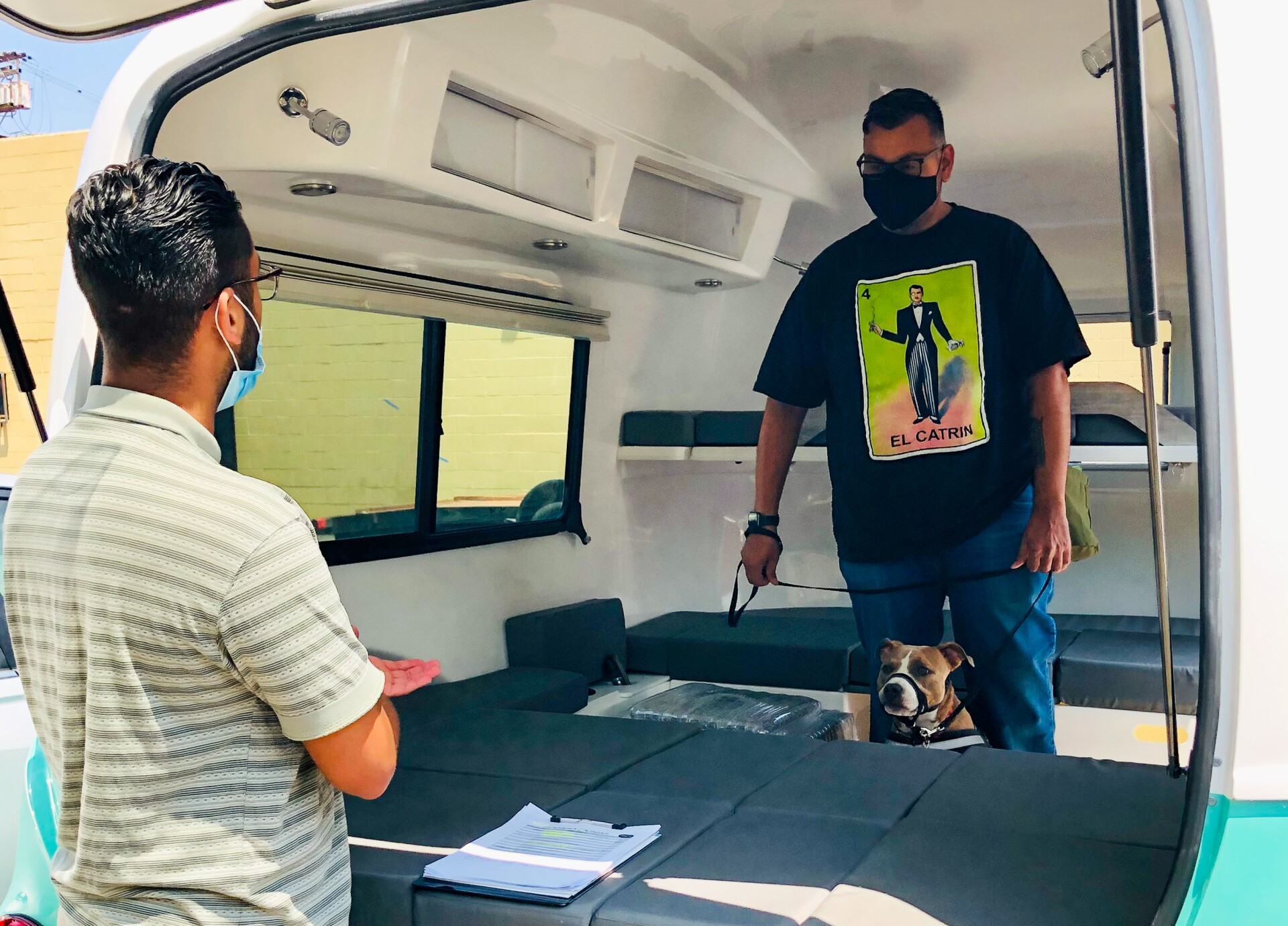


From its inception, DSTL Arts has especially focused on Northeast L.A., South L.A. and East L.A. Its programs have included one-on-one and small group workshops and arts mentorship. These span the genres of both visual art and creative writing — with an effort to maintain an intergenerational community. Its programs have included offerings like Conchas y Café, a bilingual writing workshop that culminates in a zine and an arts mentoring program for teenagers that is evolving into a Poet/Artist Development Program for emerging artists 18 and older. The Mobile Art Lab will continue much of this work.
"I'll be able to now provide access to technology that people didn't have before in a way that is more mobile," said Pichardo." That's really where the core of this idea came from, because it was always about accessibility and providing accessibility to the community, to the arts in different ways. Whether that be as an audience member or as an active participant in the arts."
Pichardo explained that during the pandemic, many people lost access points to the internet — whether because of income challenges or due to libraries closing. Instead, the Mobile Art Lab will come to them.
DSTL Arts has previously partnered with a variety of spaces for workshops including Patria Coffee in Compton; the Vernon - Leon H. Washington Jr. Memorial Branch Library in South L.A.; Arroyo Seco Regional Branch Library in Highland Park; and the Benjamin Franklin Branch Library in Boyle Heights. No matter the location, the biggest takeaway Pichardo has noticed is the power of creativity and knowledge.
"The biggest thing that I see is the empowerment that people feel from knowing that they're able to create something," Pichardo said. "And it doesn't matter whether they're a novice — a person that's just coming into the idea of themselves being a poet or an artist — or it's an artist that's been practicing for a long time."
Pichardo hopes that with the Jeep and camper together, there can be multiple workshops going on at once. The traveling art space also alleviates the need to rent space and will help DSTL continue reaching communities across L.A. Pichardo has also been using YouTube to stream the workshops for those that might not be able to attend in person; something that has been a consideration since before the pandemic restricted gatherings. This hybrid mode of programming, along with the outdoor option, made the Mobile Art Lab even more fitting for DSTL Arts.
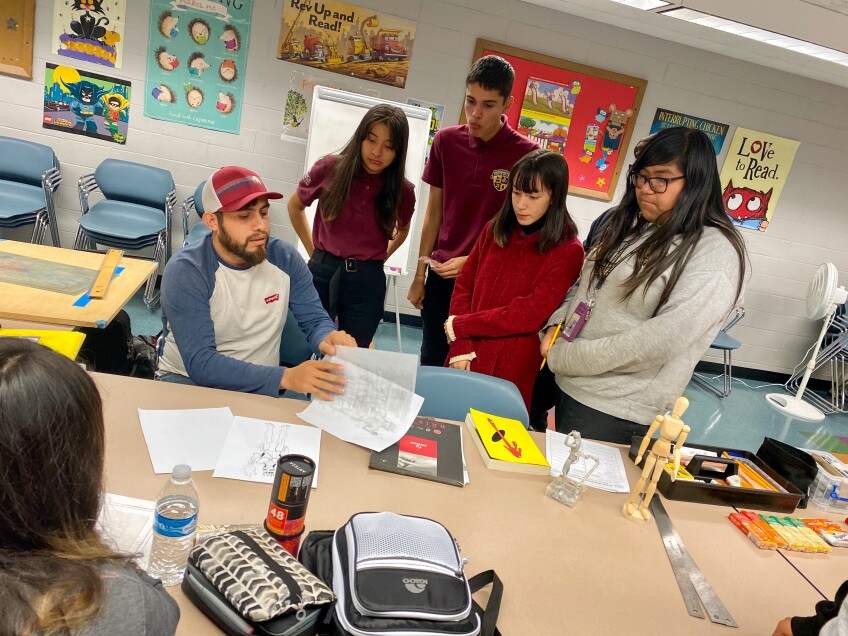



Pichardo explained that it all comes back to the acronym in the name: DSTL stands for "Develop Skills and Transcend Limits through the Arts." That's remained at the forefront over the years. It's clear through the many branches of the organization.
"I always envisioned this organization would be an organization that would truly empower people by helping them realize that they have the skills within them," Pichardo said. "And it's just a matter of developing those skills and having access to tools and technology that helps them transcend whatever limits they thought they had."
Sometimes all it takes is a camper and the chance to make whatever art you want.
